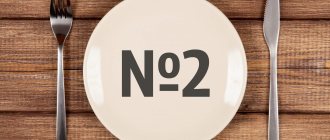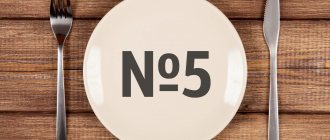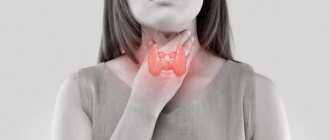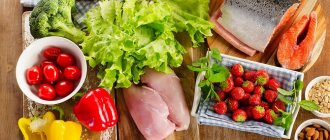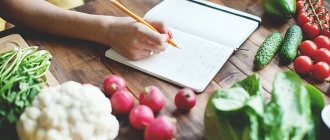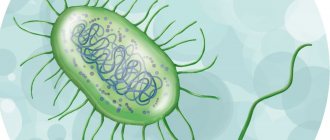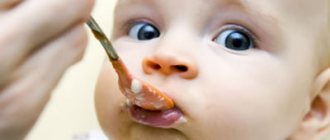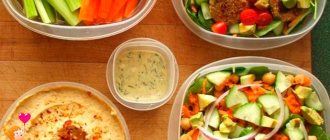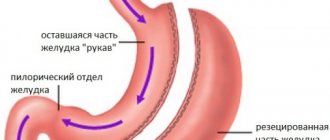November 30, 2021
One of the main reasons for the spread of rotaviruses is non-compliance with personal hygiene rules, when transmission of infection occurs through hands, which in turn contaminate dishes, toys, and linen
The pathogen is transmitted through dirty hands, that is, the transmission mechanism is fecal-oral, although airborne droplets are also possible. It can affect people at any age, and the causative agent of rotavirus gastroenteritis is a virus from the order Rotavirus, family Reoviridae. Routes of transmission: contact and household (through dirty hands and household items); aqueous (when drinking water infected with viruses, including bottled water); nutritional (most often when consuming milk and dairy products).
The possibility of airborne transmission of rotavirus infection cannot be ruled out. But one of the main reasons for the spread of rotaviruses is non-compliance with personal hygiene rules, when transmission of the infection occurs through hands, which in turn contaminate dishes, toys, and linen.
The carrier of the infection is a sick person or a healthy virus carrier. The virus multiplies in the cells of the mucous membrane of the gastrointestinal tract and is excreted in the feces for up to 3 weeks (usually 7-8 days from the first symptoms of the disease). Damage to the mucous membrane of the digestive tract disrupts the digestion of food and leads to the development of severe diarrhea and dehydration. The main mechanism of transmission of rotavirus infection is through food. Infection occurs through the fecal-oral route.
What is rotavirus?
Rotavirus is a virus that infects the tissues of the oropharynx, stomach and intestines. It is also called stomach or intestinal flu. It is very viable and can survive in water and on the surface of vegetables and fruits for up to 8 weeks. Easily transmitted from person to person. This is the reason why rotavirus infections are in second place after classic acute respiratory viral infections.
There are many ways to become infected with rotavirus:
- From person to person, including from asymptomatic carriers;
- With water - while swimming in bodies of water of any size, or when drinking unsafe water;
- With food - most often the cause is poorly washed vegetables and fruits or foods prepared by an infected person;
- In case of contact with the surfaces of objects - if you traveled on public transport and then did not wash/disinfect your hands before eating.
- Immunity to rotavirus is very short-lived, so the likelihood of re-infection is high.
Causes
The causative agent of rotavirus infection in children and adults is rotavirus, which has the ability to survive even when treated with potent disinfectant solutions. In the feces of a sick person, its vital activity persists for 7 months, in environmental conditions - for more than a month. The infection is transmitted from a carrier or a sick person through the fecal-oral route through water, food and household items, especially when the sanitary and hygienic condition of the premises is unsatisfactory.
Patients at risk for rotavirus include:
- childhood;
- with disturbances in the functioning of the immune system, when it is suppressed;
- with chronic intestinal diseases;
- with violations in the diet, as well as when changing baby food;
- working or visiting large groups;
- not observing the rules of personal hygiene.
Symptoms of rotavirus
The disease manifests itself 2–3 days after infection. Typical symptoms include:
- Pain in the stomach and intestines, rumbling in the abdomen
- Nausea and vomiting (especially common on the first day of illness and in severe cases of the disease)
- Diarrhea (it can last 3–5 days, and repeat every hour or a little less often up to 15 times a day)
- Constant urge to defecate
- Heaviness in the stomach and loss of appetite
- General weakness
- White coating on the tongue and swelling of the larynx
- Increase in temperature to 37–37.5 * C (appear more often with severe manifestations of the disease)
- The infection may be accompanied by damage to the upper respiratory tract - rhinitis, inflammation of the nasopharynx and tonsils.
Therapeutic nutrition for acute intestinal infections in children
Acute intestinal infections (AI) are a large group of human infectious diseases with an enteral (fecal-oral) mechanism of infection, caused by pathogenic (Shigella, Salmonella, etc.) and opportunistic bacteria (Proteus, Klebsiella, Clostridia, etc.), viruses (rota-, astro-, adeno-, caliciviruses) or protozoa (dysenteric amoeba, cryptosporidium, balantidia coli, etc.).
ACIs still occupy a leading place in the infectious pathology of childhood, second only to influenza and acute respiratory infections in terms of incidence. According to WHO, up to 1–1.2 billion “diarrheal” diseases are registered annually in the world and about 5 million children die annually from intestinal infections and their complications.
The leading component of treatment for acute intestinal infections is a rational therapeutic diet, adapted to the age of the child, the nature of the previous disease and feeding.
The goal of diet therapy is to reduce inflammatory changes in the gastrointestinal tract, normalize functional activity and digestive processes, and maximize sparing of the intestinal mucosa.
It is fundamentally important to avoid taking “hunger” or “water-tea” breaks, since even with severe forms of acute intestinal infections, the digestive function of the intestine is preserved, and “starvation diets” significantly weaken the body’s defenses and slow down the processes of mucosal restoration.
Basic requirements for diet for acute intestinal infections:
- food should be mechanically and chemically gentle, easily digestible, varied in taste;
- culinary processing: food is steamed, boiled, pureed, mashed;
- restriction in the diet of fats, carbohydrates, table salt and calories;
- introducing sufficient amounts of protein;
- inclusion in diets of low- and lactose-free foods and fermented milk products enriched with bifidobacteria and lactobacilli;
- reduction in the amount of food in the first days of illness by 15–20% (in severe forms up to 50%) of the physiological need;
- eating warm food (33–38 ° C) in 5–6 meals.
Excluded from the diet are stimulants of intestinal motility, foods and dishes that enhance the processes of fermentation and putrefaction in the intestines: raw, sour berries and fruits, juices, raw vegetables, butter and vegetable oils (in their pure form), sweets, fresh baked goods. Do not give legumes, beets, cucumbers, sauerkraut, radishes, oranges, pears, tangerines, plums, grapes. Oatmeal is not recommended, as it enhances fermentation processes. Fatty varieties of meat and fish products (pork, lamb, goose, duck, salmon, etc.) should be excluded from the diet.
Whole milk should not be prescribed in the acute period of intestinal infections, as it enhances intestinal motility and fermentation processes as a result of impaired breakdown of milk sugar (lactose), which is accompanied by increased watery diarrhea and bloating.
In the first days of the disease, black bread is also excluded, which increases intestinal motility and increases the frequency of stools.
When the manifestations of intoxication decrease, vomiting stops and appetite improves, cottage cheese, meat (beef, veal, turkey, rabbit in the form of cutlets, meatballs, dumplings), low-fat fish, egg yolk and steam omelet are introduced. Thinly sliced crackers from white bread, porridge with water (except millet and pearl barley), slimy soups, cereal soups with boiled vermicelli in a weak meat broth are allowed.
In the acute period of the disease, it is recommended to use lactic acid products (kefir, acidophilus mixtures, etc.). Lactic acid products, due to the active action of the lactobacilli, bifidobacteria they contain, the end products of casein proteolysis (amino acids and peptides, glutamic acid, threonine, etc.), the increased amount of vitamins B, C, etc. help improve digestion processes and assimilation of food, have a stimulating effect influence on the secretory and motor functions of the intestine, improve the absorption of nitrogen, calcium salts and fat. In addition, kefir has an antitoxic and bactericidal effect on pathogenic and opportunistic flora due to the presence of lactic acid and lactobacilli. However, long-term use of only kefir or other lactic acid mixtures is impractical, since these products are poor in proteins and fats. A medicinal fermented milk product is Lactofidus, a low-lactose product enriched with bifidobacteria.
When treating children with ACI during the recovery period, it is necessary to widely use fruit and vegetable products (apples, carrots, potatoes, etc.), as they contain a large amount of pectin. Pectin is a colloid that has the ability to bind water and swell, forming a foamy mass that, passing through the intestinal tract, adsorbs the remains of nutrients, bacteria, and toxic products. In an acidic environment, calcium is easily cleaved from pectin, providing an anti-inflammatory effect on the intestinal mucosa. Fruits and vegetables contain organic acids that have a bactericidal effect, as well as a large amount of vitamins, glucose, fructose, carotene, etc. The use of boiled vegetables and baked fruits already in the acute period of intestinal infections contributes to a more rapid disappearance of intoxication, normalization of stools and recovery.
Infant nutrition
The optimal type of nutrition for infants is mother's milk, which is prescribed in fractions up to 10 times a day (50.0 ml every 2 hours). It is possible to apply the principle of “free feeding”.
Recently, in the clinic of intestinal infections, preference is given to prescribing low- and lactose-free formulas (Low-lactose Nutrilon, Frisopep, Humana LP + MCT, soy mixtures) to children who are bottle-fed. In severe forms of acute intestinal infections and the development of malnutrition, hydrolyzed mixtures (Nutrilon Pepti TSC, Nutrimigen, Alfare, Pregestimil, etc.) are widely used, promoting the rapid restoration of secretion and absorption processes in the intestine and the absorption of proteins, fats and carbohydrates, which prevents the development of fermentopathy in the outcome of intestinal infections (table).
According to our data, as a result of a clinical and laboratory assessment of the effect of low-lactose mixtures on the clinical picture and state of the intestinal microbiocenosis during viral diarrhea in young children, a positive effect was obtained in stimulating the functional activity of normal and, first of all, saccharolytic microflora (by stabilizing the indicators of acetic, oily) and propionic acids), as well as a regulating effect on the metabolic processes of carbohydrates and fats during the acute period of the disease. The clinical effect consisted of rapid and persistent relief of the main manifestations of the disease: vomiting, diarrhea, abdominal syndrome and exicosis, which, along with good tolerability, made it possible to recommend low-lactose mixtures for use as therapeutic nutrition in young children during the acute period of intestinal infections of viral etiology.
The tactics of feeding and introducing complementary foods in patients with acute intestinal infections are individual. The frequency of feedings and the amount of food per meal are determined by the age of the child, the severity of the disease, the presence and frequency of vomiting and regurgitation. It is important to take into account that with 8-10 feedings (every 2 hours) with a mandatory night break of 6 hours, the child should receive 10-50 ml of food per feeding, with 8 feedings (every 2.5 hours) - 60-50 ml of food. 80 ml, with 7 times (after 3 hours) - 90-110 ml, with 6 times (after 3.5 hours) - 120-160 ml, with 5 times (after 4 hours) - 170-200 ml. The missing amount of nutrition to the physiological requirement for children of the first year of life should be replaced with liquid (glucose-saline solutions - Regidron, Glucosolan, etc.).
When unloading the diet daily, the volume of food increases by 20–30 ml per feeding and the frequency of feedings changes accordingly, that is, the interval between feedings increases. If the disease dynamics are positive and appetite is improved, it is necessary to bring the daily amount of food to the physiological requirement no later than 3–5 days from the start of treatment.
Children 5–6 months old, with improvement in condition and positive dynamics in the gastrointestinal tract, are prescribed complementary feeding with porridge prepared from rice, semolina, buckwheat with half-and-half milk (or water for rotavirus infection). Porridge is prescribed in an amount of 50–100–150 g, depending on the age of the child and the method of feeding before the disease. After a few days, add 10–20 g of cottage cheese made from boiled milk to this complementary food, and then vegetable purees, berry or fruit jelly in the amount of 50–100–150 ml, and juices.
The diet of children 7–8 months old should be more varied. When their condition improves, they are prescribed not only porridge, cottage cheese and jelly, but also vegetable purees, 1/2 or 1/4 of a chicken egg yolk, then broths, vegetable soup and minced meat. It is allowed to add butter to porridge and vegetable puree. The yolk (the egg must be hard-boiled) can be given separately or added to porridge, vegetable puree, or soup.
Nutrition for children over one year old is based on the same principle as for infants. Only the one-time volume of food increases and foods recommended for feeding healthy children of this age are included in the diet more quickly. In the acute period of the disease, especially in the presence of frequent vomiting, dietary relief should be carried out. On the first day, the child is prescribed kefir 100–150–200 ml (depending on age) every 3–3.5 hours. Then they switch to a diet appropriate for their age, but with the exclusion of prohibited foods. In the acute period of the disease, all food is given in pureed form, and steam cooking of second courses is used. Cereals for preparing porridge and side dishes, vegetables are boiled until soft. The set of products should be varied and contain fermented milk mixtures, kefir, cottage cheese, cream, butter, soups, meat, fish, eggs, potatoes, fresh vegetables and fruits. You can use canned vegetables and fruits for baby food. Avoid foods that are rich in fiber and cause flatulence (legumes, beets, turnips, rye bread, cucumbers, etc.) from the diet. We recommend watermelons, blueberries, lemons, jelly from various berries, jellies, compotes, mousses, to which it is advisable to add freshly extracted juice from cranberries and lemon.
Properly organized nutrition for a child with an intestinal infection from the first days of the disease is one of the main conditions for a smooth course of the disease and a quick recovery. Inadequate nutrition and dietary errors can worsen the child's condition, as can long-term dietary restrictions. It is important to remember that at all stages of treatment for acute intestinal infections, it is necessary to strive for adequate physiological nutrition, taking into account the age and functional state of the child’s gastrointestinal tract.
Significant difficulties in diet therapy arise in children with the development of post-infectious fermentopathy, which develops at different stages of the disease and is characterized by impaired digestion and absorption of food due to a lack of enzymes.
With ACI, especially with salmonellosis, campylobacteriosis, occurring with reactive pancreatitis, there is a violation of fat absorption and the appearance of steatorrhea - copious, shiny stools, light gray with an unpleasant odor. Diet therapy for steatorrhea is carried out with restriction of fat in the diet, but not more than 3-4 mg/kg body weight per day for children of the first year of life. This is achieved by replacing part of the dairy products with specialized low-fat products (Acidolact) and foreign-made mixtures, which contain medium-chain triglycerides as a fat component, which practically do not require pancreatic lipase for absorption (Nutrilon Pepti TSC, Humana LP + MCT, Alfare, Pregestimil , Frisopep, etc.). If signs of acute pancreatitis appear, exclude fresh fruits, berries, vegetables, and concentrated fruit juices from the diet for up to 1 month.
The most common form of enzymatic deficiency in acute intestinal infections, especially with rotavirus infection, escherichiosis, cryptosporidiasis, is disaccharidase deficiency (impaired breakdown of carbohydrates, primarily milk sugar - lactose). In this case, there is frequent “splashing” stool, watery with a sour smell, bloating, regurgitation and anxiety after feeding.
For lactase deficiency, it is recommended to use adapted low-lactose mixtures (Low-lactose Nutrilon, Frisopep, Humana LP + MCT, etc.) or soy mixtures (Nutrilon Soya, Frisosoy, Humana SL, Similak Izomil, Enfamil Soya, etc.). In their absence - 3-day kefir; Children in the first three months of life can be given a mixture of type B-kefir, consisting of 1/3 rice water and 2/3 3-day kefir with the addition of 5% sugar (glucose, fructose), 10% porridge in water, vegetable decoctions.
As complementary foods, these patients are given dairy-free porridge and vegetable purees in water with vegetable or butter, cottage cheese washed from whey, meat puree, and baked apple. Schemes for introducing complementary foods can be individualized; attention should be paid to the early administration of meat (daily dose in 3-4 doses). Avoid the use of sweet fruit juices, products that increase gas formation in the intestines and enhance peristalsis (rye bread, white cabbage, beets and other vegetables with coarse fiber, fruit peels, prunes, dried fruits). The duration of adherence to a low-lactose diet varies from person to person – from 1.5–2 to 6 months.
After severe intestinal infections, intolerance not only to lactose, but also to other disaccharides, may occur, less often - complete carbohydrate intolerance (glucose-galactose malabsorption), in which patients experience severe diarrhea, which is aggravated by the use of mixtures and products containing disaccharides, monosaccharides and starch ( milk and soy mixtures, cereals and almost all fruits and vegetables). This extremely severe condition, leading to dehydration and progressive degeneration, requires a strict carbohydrate-free diet and parenteral glucose or total parenteral nutrition. In some cases, oral administration of fructose is possible. With individual tolerance, protein and fat-containing foods are retained in the diet: lean meat - turkey, horse meat, beef, rabbit, vegetable oil, a limited range of vegetables with low sucrose and glucose content - cauliflower and Brussels sprouts, spinach, green beans, salad.
Protein deficiency occurs due to impaired utilization, absorption, or loss of endogenous protein, especially in children with initial malnutrition. Correction of protein losses is carried out by prescribing hydrolyzed mixtures (Nutrilon Pepti TSC, Nutrimigen, Alfare, Pregestimil, Frisopep, etc.).
With prolonged post-infectious diarrhea, especially in children who have received repeated courses of antibacterial drugs, it is possible to develop a secondary food allergy, accompanied by sensitization to cow's milk proteins, and less often to egg whites and cereal proteins. Such disorders can occur not only in children with allergic diathesis, but also in patients without a burdened premorbid background. Clinically, post-infectious food allergy is manifested by hypersensitivity to previously well-tolerated products - infant formula, milk porridge, cottage cheese, etc. Children experience abdominal pain, bloating after feeding, regurgitation, loose stools with cloudy glassy mucus, sometimes streaked with blood, during scatological examination Eosinophils are found in the stool. Characterized by a stop in body weight gain, up to the development of malnutrition.
When an allergy to cow's milk proteins is detected in the diet of children of the first year of life, mixtures based on soy (Nutrilak Soya, Nutrilon Soya, Frisosoy, Humana SL, Enfamil Soya, etc.) and based on protein hydrolysates (Nutrilon Pepti TSC, Nutrimigen, Pregestimil, Frisopep, etc.).
The lack of specialized products is not an insurmountable obstacle to organizing a dairy-free diet. The elimination diet in this case is based on dairy-free pureed porridges (rice, buckwheat, corn), fruit and vegetable purees, potatoes, zucchini, cauliflower, pumpkin, baked apples, bananas, vegetable and butter, and meat purees. In this case, it is necessary to take into account the child’s physiological needs for basic nutrients and energy. Meat puree, as the main source of protein, in the absence of specialized mixtures, can be prescribed from 2–3 months of age. It is preferable to use horse meat, rabbit meat, poultry, lean pork, as well as dietary canned meat - Little Humpbacked Horse, Cheburashka, Cockerel, Pork puree, etc.
For children older than one year, the principle of preparing a diet is the same. When prescribing a dairy-free diet, it is necessary to completely compensate for the missing amount of animal protein with meat proteins, soy mixtures, and also exclude from the diet foods that have increased sensitizing activity (chocolate, fish, citrus fruits, carrots, beets, red apples, apricots and other orange or red fruits). , nuts, honey). For post-infectious food allergies, the period of adherence to the specified diet is at least 3 months, and more often - from 6 to 12 months. The effect of an elimination diet is assessed by the disappearance of symptoms of the disease, weight gain, and normalization of stool.
L. N. Mazankova , Doctor of Medical Sciences, Professor N. O. Ilyina , Candidate of Medical Sciences L. V. Begiashvili RMAPO , Moscow
For questions regarding literature, please contact the editor.
How to treat rotavirus
No specific medications have been developed for rotavirus infection, so there is no point in running to the pharmacy for a magic pill. The most important treatment methods:
- Drink plenty of fluids. It is important to drink a lot of water - pure and mineral (potassium-sodium) - throughout the day. You can use Regidron to reduce the risk of dehydration.
- A gentle diet. In the first couple of days, it is recommended to refuse food, then include in the diet boiled rice and rice “broth”, mashed potatoes with water, crackers and dryers, boiled soft white meat. During treatment, you should exclude all foods that cause fermentation from your diet - berries, vegetables, fruits, dairy products, sweets and baked goods.
- Adsorbent preparations - activated carbon, polysorb, enterosgel - and multienzyme preparations to improve the absorption of nutrients from food.
Under no circumstances should you take antibiotics! They do not have any effect on the virus, but at the same time they destroy the natural intestinal flora, which protects our immunity.
In most cases, a person recovers on his own without medical intervention if he follows the recommendations described above. But with a clear decrease in the body’s immune functions, complications are possible - bacterial damage to the intestines, damage to the nervous system, dehydration.
An increase in temperature to 38 * C or higher, uncontrollable vomiting and diarrhea, a serious loss of strength is a reason to urgently consult a doctor. If the condition does not improve on the third day after the onset of the disease, medical intervention is required. In some cases, the doctor may insist on hospitalization of the patient.
Questions and answers
How is rotavirus infection transmitted?
The mechanism of transmission of the virus is fecal-oral, where the causative agent of the disease enters the environment along with the feces of the carrier or patient, and then on dirty hands into the body of a healthy person. Household items, food, dirty water - all this can become a source of infection.
What can you eat if you have rotavirus infection?
Recommendations for a patient with rotavirus infection include dietary table No. 46 with restrictions on the amount of carbohydrates and dairy dishes, as well as an increase in the amount of protein foods. This diet plan is aimed at restoring the body’s immune system and stabilizing the digestive system that has been hit by the virus.
How long does rotavirus infection last?
The duration of the disease depends on the state of health of the person and his immune system. It may take 10-15 days from the moment of infection to complete recovery, where the first 6-7 days are an acute period with a whole bunch of unpleasant symptoms. The incubation period lasts from several hours to five days, after which the infection immediately makes itself felt with a sharp deterioration in the patient’s condition.

